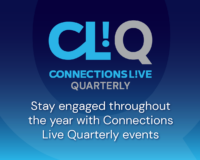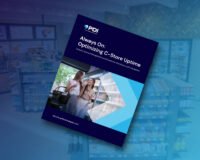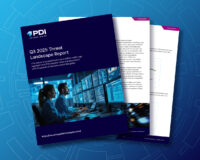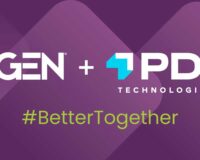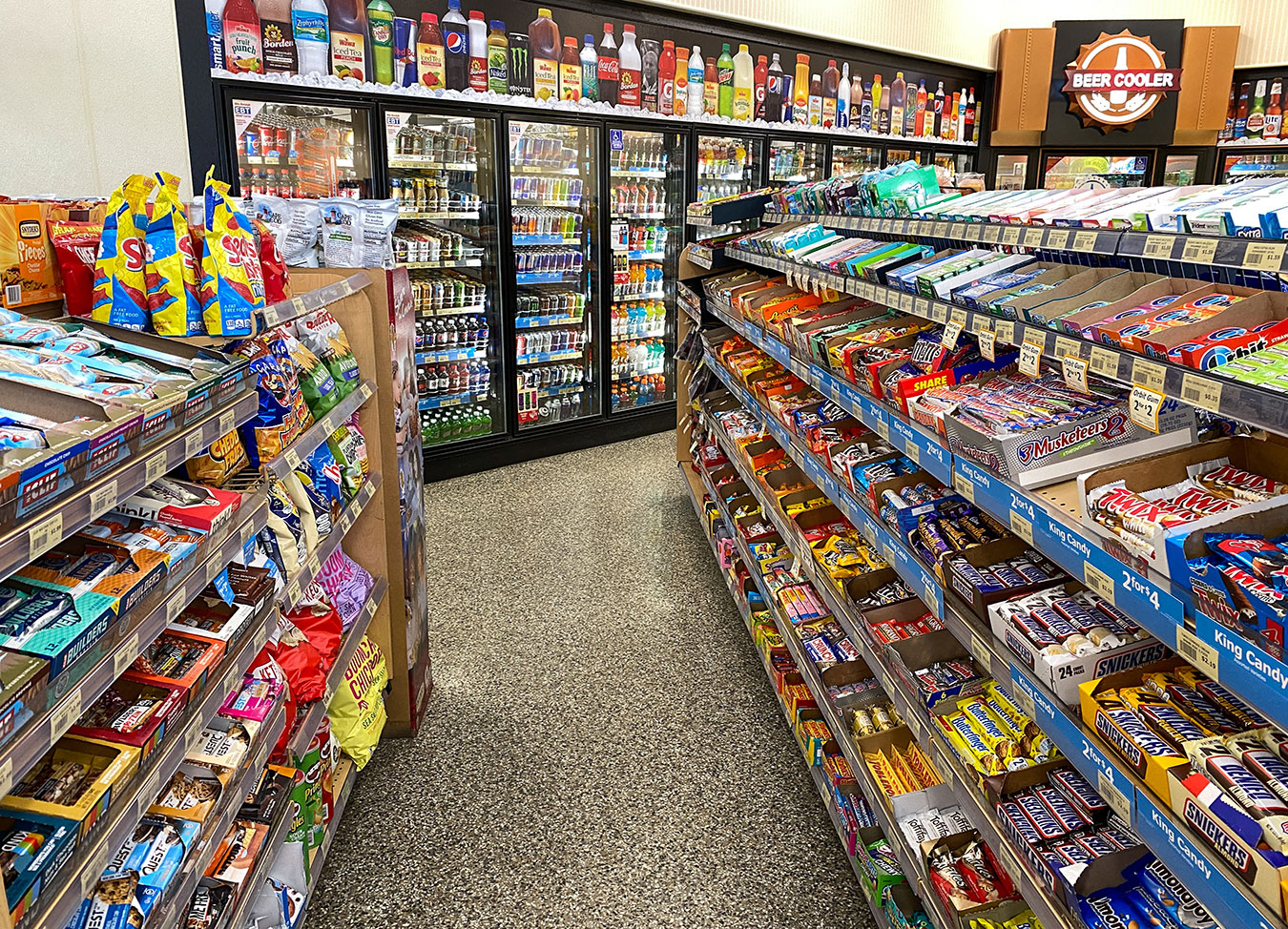
In-store sales at convenience stores have been steadily climbing for the past twenty years — with no sign of slowing down.
And on top of that, the pandemic shifted many trends in c-store’s favor to become an even stronger growth opportunity for consumer packaged goods (CPG) brands.
What is CPG marketing?
Consumer Packaged Goods, or CPG, brands use marketing strategies to generate brand awareness and loyalty among consumers. CPGs have a great opportunity to focus their marketing efforts in retail convenience stores to capitalize on consumer demand. It’s also a highly efficient channel to test new products and get data-driven insights.
Today’s consumers – especially millennials – are buying more food on-the-go. Snacks, drinks, and readily prepared meals are in high demand and convenience stores provide the efficiency that consumers are looking for more than ever.
So without further ado, here are four key reasons c-store is the right channel to reach your shoppers.
1. C-store shoppers are loyal
Loyalty makes sense in the c-store channel where high-frequency, habitual shopping trips are the norm. Many shoppers will stop at the same c-store every morning to grab the same CPG products for the day.
And when you combine this type of shopping with easy-to-use rewards programs, the results are impressive. Brand loyalty engagement in the c-store channel, for example, is up thanks in large part to strategic moves by retailers to modernize their loyalty programs over the last few years.
What this means for CPG brands:
Brands in the CPG industry can piggyback on c-store loyalty by partnering with stores to offer rewards. It’s an age-old but effective strategy for brands because it provides access to a valuable, built-in audience. Loyalty members, after all, spend 29% more per visit than non-members.
Case in point: Red Bull, Coca Cola, Nabisco and Frito Lay’s partnership with Yesway (a convenience store chain with 402 stores scattered across the Midwest and Southern U.S.) These brands all work with Yesway to create and fund promotional offers within the retailer’s loyalty program. Examples include:
- Purchase any six 20-ounce Coke products and get a seventh for free.
- Buy two Red Bull drinks to get 3 cents off per gallon.
- Buy any King Size Oreo, Nutter Butter or Chips Ahoy to get 3 cents off per gallon.
(By the way, if your brand is looking to run these types of promotions, PDI’s Offer Network of over 60,000 c-stores can help!)
2. Convenience is one of the few channels with rising in-store sales, despite the shift to e-commerce
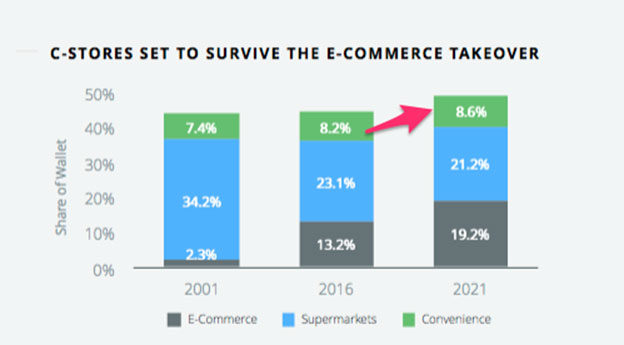
As you can see above, c-stores are weathering the consumer shift to e-commerce quite well compared to grocery. In fact, over the past 20 years, in-store sales at convenience stores have risen 152%, defying the slowdown seen across the rest of brick and mortar retail. Even last year, in 2020, in-store sales grew 1.5%, driven largely by bigger basket sizes.
Why is this happening? Because c-store shopping trips are driven by immediate needs. In fact, 83% of items purchased in a c-store are consumed within the hour. And that’s something that can’t be replaced by e-commerce (not yet at least!).
Leroy Kelsey, director of research at NACS explains it like this: “Being the closest in the community, we sell time, and the demand to connect the consumer with products in almost real time will continue.”
What this means for CPG brands:
First, brands need to meet customers where they are. And when it comes to in-store shopping, that’s increasingly a convenience store — 44% of consumers say they’re shopping at c-stores more often than they used to.
Second, in-store shopping provides fertile ground for impulse buys. Sure, you can buy a chocolate bar online. But as Adweek points out, “the instant gratification and immediate consumption accompanying an impulse purchase isn’t possible when buying from your living room couch.”
3. Millennials are flocking to c-store
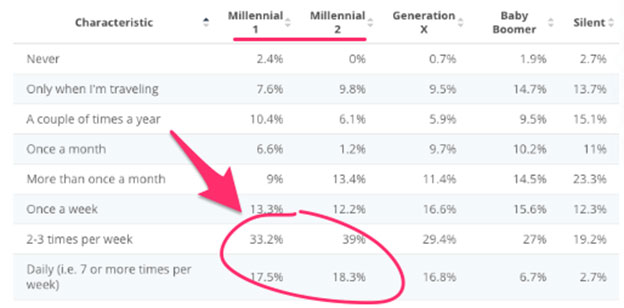
There are 83 million millennials (now 25 – 40 years old) in the U.S. with a lifetime spending power of roughly $10 trillion. And c-stores have emerged as a natural fit for this generation who tends to shop for immediate needs more frequently than their predecessors.
In fact, compared to other generations, millennials spend less money on food at home, making fewer trips to the grocery store but more trips to the convenience store. As such, they now account for more than one-third of all c-store shoppers, with 35% visiting a convenience store daily and 72% visiting 2-3 times a week.
What this means for CPG brands:
The physical trips made by millennials are heavily influenced by digital. 84% of millennials, for example, use their phones in-store for shopping assistance. This is a rich opportunity to focus on the digital channel for building robust CPG marketing strategies.
So if your brand is trying to reach millennial c-store shoppers, a mobile campaign can be highly effective. For example, we recently worked with a popular candy brand that was looking for new ways to reach millennials while driving awareness, trial and sales across multiple brands in the convenience channel.
The brand leveraged PDI’s offer network (Koupon’s offer network at the time) to launch a campaign across our partner channels, including T-Mobile Tuesdays, GasBuddy, OnStar, Facebook and retailer-owned channels like app and SMS.
The campaign exceeded expectations, driving 19% year-over-year unit sales growth for the brand. The brand also witnessed a 6.3% lift in spend per basket when shoppers redeemed the offer.
4. Mobile offers work well with c-store’s on-the-go shoppers
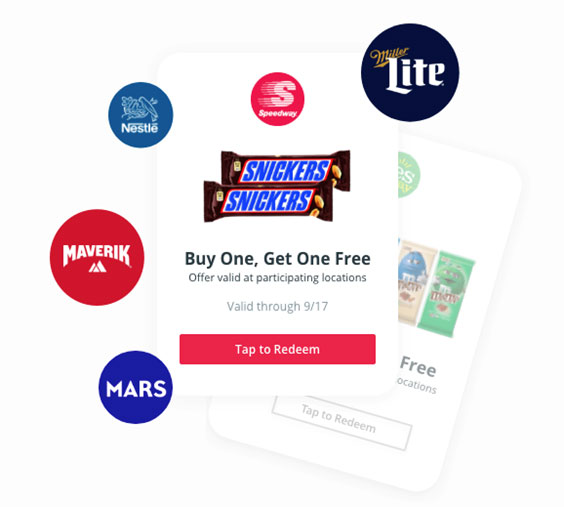
C-store shoppers are busy running from one place to the next. And like the name of the channel suggests, consumers are there for convenience.
Not surprisingly, the speed and frictionless experience of mobile coupons are well suited to this type of shopper. PDI’s average redemption rate on mobile coupons continues to be 10x greater than traditional paper coupons.
What this means for CPG brands:
Brands can use targeted mobile offers to reach busy c-store customers in real time. Here are some best practices we’ve learned to maximize your results:
- Coupons that deliver a free product perform the best, followed closely by Buy-One-Get-One offers. At PDI we understand that marketing budgets don’t always allow for a free offer, so we recommend BOGO offers.
- The majority of customers (65%) redeem an offer within 5 minutes of seeing it.
- After comparing offer view and redemption patterns across our more than 28,000 c-store clients, we found that engagement peaks on Fridays and during the evening commute.
All of this boils down to sending the right offer to the right customer at the right time. And brands who apply this strategy will win shoppers in c-store every time.
Marketing a CPG brand? See how PDI helps CPG brands reach more shoppers
We get it. The c-store channel isn’t always easy to navigate — it’s large and fragmented. But with c-store sales reaching $256 billion last year alone, the growth potential for CPG brands is staggering.
Here’s how PDI gets results for CPG brands in c-stores:
- We connect brands with retailers, using our network of over 60,000 c-store locations.
- We help brands reach and engage c-store shoppers with targeted digital promotions that drive store trips, increase basket size, and grow sales.
- We help brands secure new distribution across our network using digital promotion campaigns proven to drive product trials and awareness.
- We help simplify execution. Our team takes care of everything from selling campaigns to retailers to execution, fulfillment, and everything in between. This includes: offer sell-in, offer setup, coordination and logistics, offer distribution, authentication, fraud prevention, digital advertising support, fulfillment, and post-campaign analysis.
- We help CPG companies make data-informed decisions by evaluating consumer patterns across products, stores, and channels. And we’ll help you use these consumer insights to adjust and launch data-driven strategies.
You can thrive in today’s digital economy. Contact us today, to learn how we can help you transform your business.
